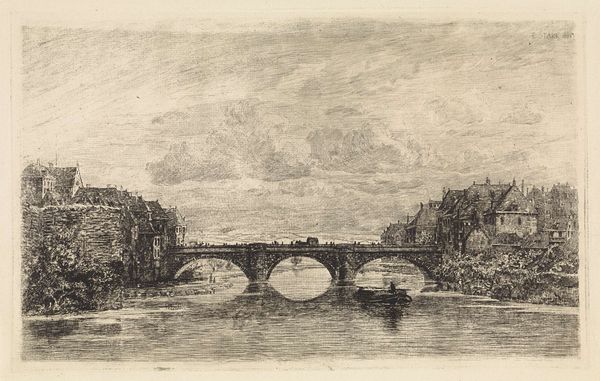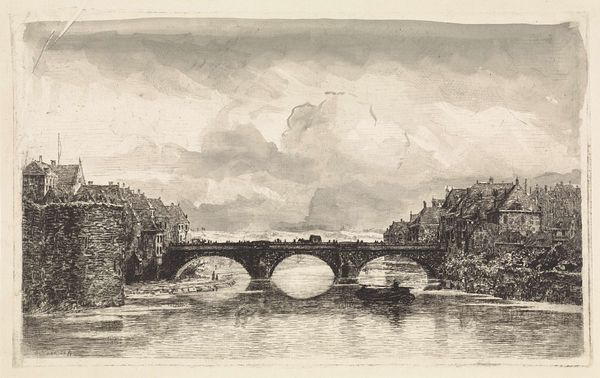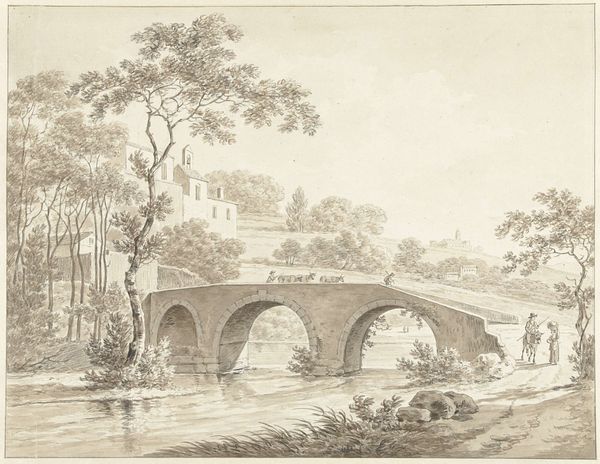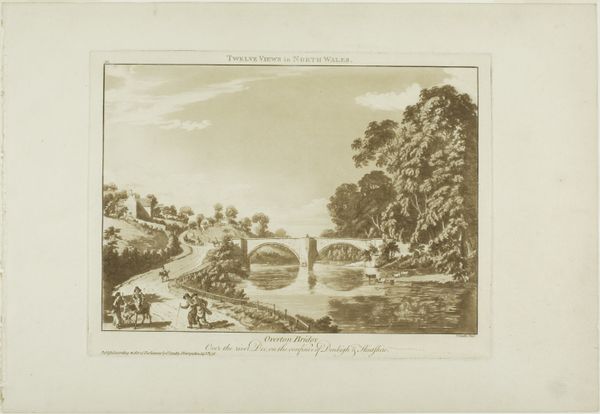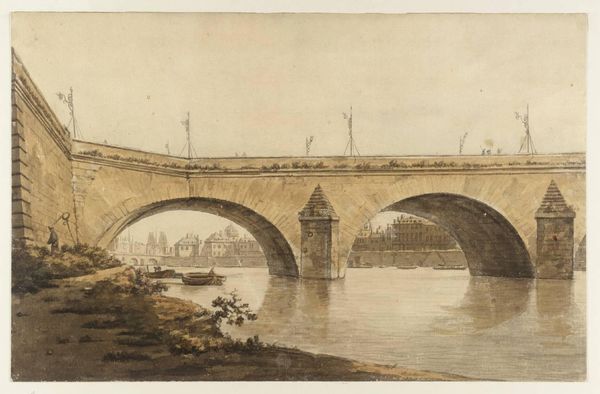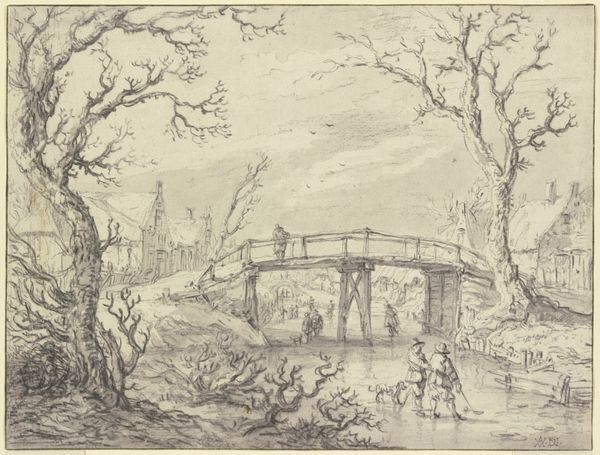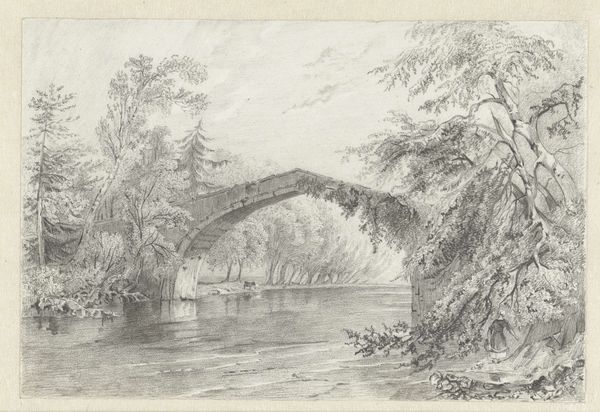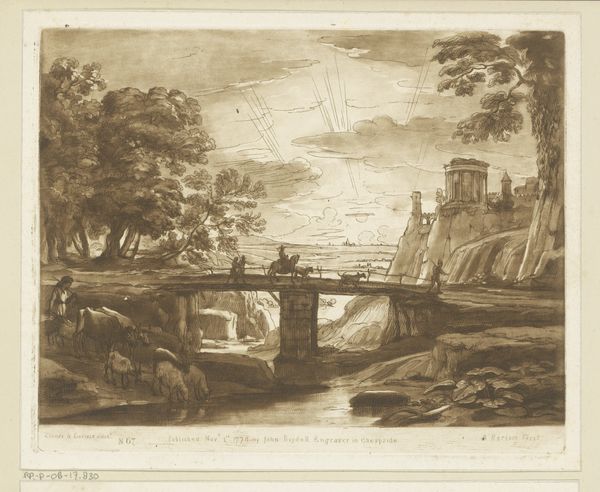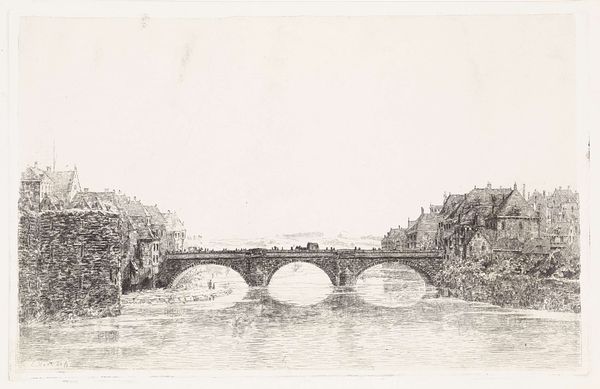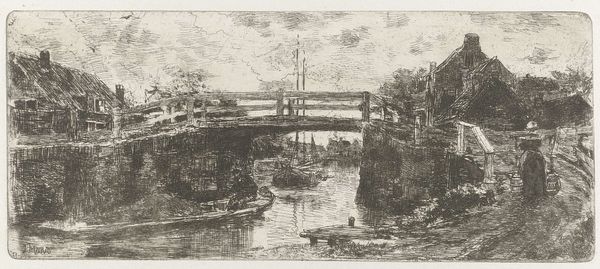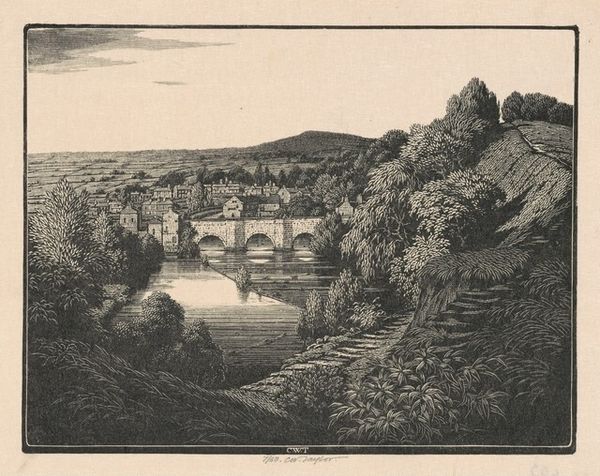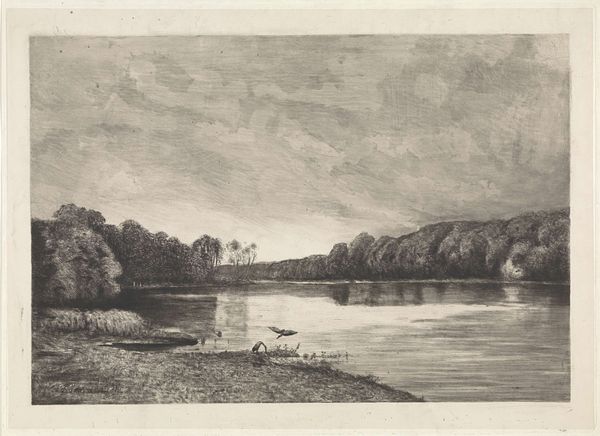
drawing, print, etching, paper, ink
#
drawing
# print
#
etching
#
landscape
#
paper
#
ink
#
cityscape
#
realism
Dimensions: height 205 mm, width 323 mm
Copyright: Rijks Museum: Open Domain
Curator: Elias Stark’s “Bridge over the Fulda in Kassel," likely created in 1888, offers us a glimpse into late 19th-century urban life through the precise medium of etching. It’s held here at the Rijksmuseum. Editor: My immediate impression is how delicate and almost dreamlike it is. The texture achieved through etching gives a beautiful depth. The bridge is central, but there's a remarkable stillness in the water’s reflection. Curator: Yes, it really captures the burgeoning industrial era juxtaposed with the everyday lives of those crossing the bridge. The bridge, an imposing structure in itself, becomes a connector, a site of transit, and the lifeblood of Kassel. Consider who crosses this bridge: merchants, workers, families...their stories etched in the image through implication. Editor: Precisely. And it's not just who crosses it, but *how* the bridge was constructed and the materials used—likely sourced and manufactured locally. We can also think about the labor that went into not just its construction, but the maintenance and upkeep, which provided sustenance to local tradespeople. What can we infer about class divisions, about who gets to partake in leisure? Curator: The cityscape looming behind, the architectural choices of that time—they indicate societal values and aspirations. It portrays an age of expansion, industrial revolution, yet it subtly hints at the stark contrasts within society at the time. Editor: Absolutely. Also, by representing this subject matter using etching rather than painting or sculpture makes a statement about how to produce art at this historical juncture. This was art that could be easily and widely reproduced. Curator: Stark perhaps democratized city views, disseminating this vista to a wider audience via printmaking and making it more accessible to all social classes. That decision, by itself, opens doors to understanding late nineteenth-century Europe, bridging gaps in cultural narratives through one image. Editor: Agreed, viewing the processes behind art alongside these details is just as important as considering the subject of art. Now I wonder what changes we might observe if we could compare Stark's cityscape with views of the bridge over time through present-day.
Comments
No comments
Be the first to comment and join the conversation on the ultimate creative platform.
